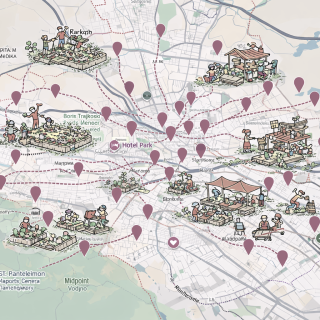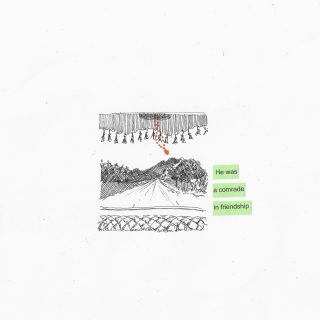“[…] in Sušica there was me on one side with weapons and a uniform; and on the other side were women my mother’s age, there were children, there were my friends with whom I had spent years in cafes, on sports fields, vacations.” – Dragan Nikolić, ICTY
On May 31, 1992, 32 years ago, by order of the commander of the First Birčanska Infantry Brigade of the Army of Republika Srpska, Major Svetozar Andrić, the Sušica camp was established in Vlasenica, one of the most notorious detention facilities in eastern Bosnia. During the four months it operated, the Bosnian Serb army and police detained at least 2,000 Bosnian Muslims in Sušica, mostly civilians – men, women, the elderly, and children. About 200 detainees were shot or died as a result of beatings.
The Sušica camp was located near the town, in barracks that were used before the war as storage for Territorial Defense equipment and weapons. The detainees were kept in a locked hangar, under constant surveillance by armed guards and behind barbed wire.
From the last day of May 1992, when the expulsion and arrest of Bosniaks from the Birač region became increasingly frequent and soon widespread, civilians from Vlasenica and surrounding villages, as well as from Kalesija, Šekovići, and Rogatica, were brought to the Sušica camp. They were also brought from other detention facilities under control of the Birčanska Brigade, where there was no more space. Upon arrival, the guards at Sušica would register the detainees, then confiscate their personal documents, money, and small valuables. The men had no choice, while women were given an ultimatum – if they wanted to leave the camp and thus be expelled to the territory under control of the Army of Bosnia and Herzegovina, they had to sign a statement that they were leaving Vlasenica voluntarily. Twenty women who refused to sign were kept in the camp, in a separate part of the hangar, under the same treatment as the men.
The conditions in which women, children, and men were kept in the camp were extremely cruel and dehumanizing. In a space measuring 15×30 meters, between 150 and 200 detainees were held daily. Most slept on the concrete floor, packed tightly together, in the same room where they were forced to use a communal bucket instead of a toilet at night. Food was scarce, often spoiled, and they received water only twice a day. Medicine, medical help, and even basic hygiene products were unavailable, causing many detainees to suffer from skin diseases.
The Sušica camp was jointly managed by the military and local police, and the guards were mostly from Vlasenica, former neighbors and friends of the detained Bosniaks. The military command, starting with the security officer, then the commander of the Vlasenica battalion of the Birčanska Brigade, Major Slobodan Pajić, all the way to Svetozar Andrić, was regularly informed about the conditions in the camp, the outcome of interrogations, and the number of detainees. Andrić and Pajić knew that the detainees were beaten daily, psychologically and physically abused, taken for forced labor from which many did not return, beaten to death, or shot.
Girls and women, many in front of their children, were taken out of the hangar at night to the guardhouse or other nearby locations in Vlasenica where they were raped and sexually abused by guards and other persons who had access to the detainees. In her testimony before the ICTY, protected witness SU-032 said: “[…] When I came back to the hangar, I found my son crying. And all those people were looking at me. I felt sad, miserable, and wretched. I felt so humiliated. I felt I was no longer a mother or a wife because experiencing something like that cannot be described.”
The commander of the Sušica camp, Dragan Nikolić, known as Jenki, was also one of the most brutal abusers within the camp. According to the stories of the detainees, Jenki claimed he was “god, the fist, and the law.” He often intimidated the detainees by shooting above their heads in the enclosed space, cocking his weapon towards them, threatening to throw a grenade into the hangar, and pushing a bayonet into their mouths. Along with other guards, he actively participated in the abuse and brutal beatings of detainees, some of which resulted in death.
In mid-June 1992, the commander of the Vlasenica battalion of the Birčanska Brigade, Major Slobodan Pajić, banned all visits to the camp, especially with recording devices and cameras, as well as interviewing detainees. During an inspection of the camp conducted by members of the Conference on Security and Cooperation in Europe (now OSCE) mission in early September 1992, the guards hid detainees with visible injuries and poor health. Despite this, the report following this visit clearly stated that the detainees were frightened, starving, and “fearful of the camp authorities.” Murders were also covered up by creating false reports, such as one stating that two detainees, Durmo Handžić and Asim Zildžić, died of heart attacks, although it was later established that they were beaten to death.
The mass shooting of detainees from the Sušica camp, after which this detention facility was closed and evidence of its existence removed, took place at the end of September 1992. Members of the Serbian forces took about 150 remaining detainees out of the camp in four turns, and transported them to Debelo Brdo, where they shot and buried them. The shooting of the detainees followed the funeral of Serbian soldiers in Vlasenica, attended by political and military officials, including Svetozar Andrić. According to Dragan Nikolić’s admission, Enes (31) and Bernes Hadžić (29), the sons of Habiba Hadžić, who was also a detainee of the Sušica camp, were killed at Debelo Brdo. “They are not alive. Jenki knows that. I would only ask to know which grave they are in. So their mother can bury them with dignity. So I can at least see, go where their bones are, so their mother can see them. To know where they are buried. But I don’t know, I have never found out.” [1]
In July 1995, nearly three years later, members of the Serbian forces used the Sušica camp again as a detention facility during the genocide in Srebrenica. Members of the 10th Sabotage Detachment of the Main Staff of the Army of Republika Srpska, the 1st Birčanska Infantry Brigade, and the 5th Battalion of the Military Police of the Drina Corps (currently on trial before the Court of Bosnia and Herzegovina) detained, held in inhumane conditions, and then took out for execution several men and boys previously captured while trying to reach the territory under the control of the Army of Bosnia and Herzegovina, following the fall of the Srebrenica enclave on July 11, 1995.
In August 1994, the New York Times published a series of extensive reports on the Sušica camp based on interviews with several detainees and Pero Popović, a former guard at the camp. A few months later, in November 1994, the newly established International Criminal Tribunal for the former Yugoslavia issued its first indictment for war crimes committed in the armed conflicts on the territory of Bosnia and Herzegovina against the former manager of the Sušica camp, Dragan Nikolić, known as Jenki. Nikolić pleaded guilty before the ICTY to all the crimes he was charged with, including murder, beatings, and rape, and was sentenced to 20 years in prison. Predrag Bastah and Rade Garić, members of the police, and Goran Višković, a member of the military police in Vlasenica, were convicted before the Court of Bosnia and Herzegovina for taking out and then killing individual detainees or groups of detainees from the Sušica camp.
So far, no one has prosecuted Svetozar Andrić. On the contrary, in the last ten years, the retired general has held positions such as deputy mayor of the municipality of New Belgrade, member of parliament, and member of the City Council of Belgrade. The Humanitarian Law Center filed a criminal complaint against Andrić in 2018. The investigation is ongoing.
Katarina Maruna is a researcher at the Humanitarian Law Center. She completed her master’s studies at the Faculty of Political Sciences in Belgrade in the field of international humanitarian law and human rights law.
[1] Testimony of Habiba Hadžić before the ICTY in the Nikolić case, https://www.icty.org/bcs/content/habiba-had%C5%BEi%C4%87
Translated by Luna Đorđević




